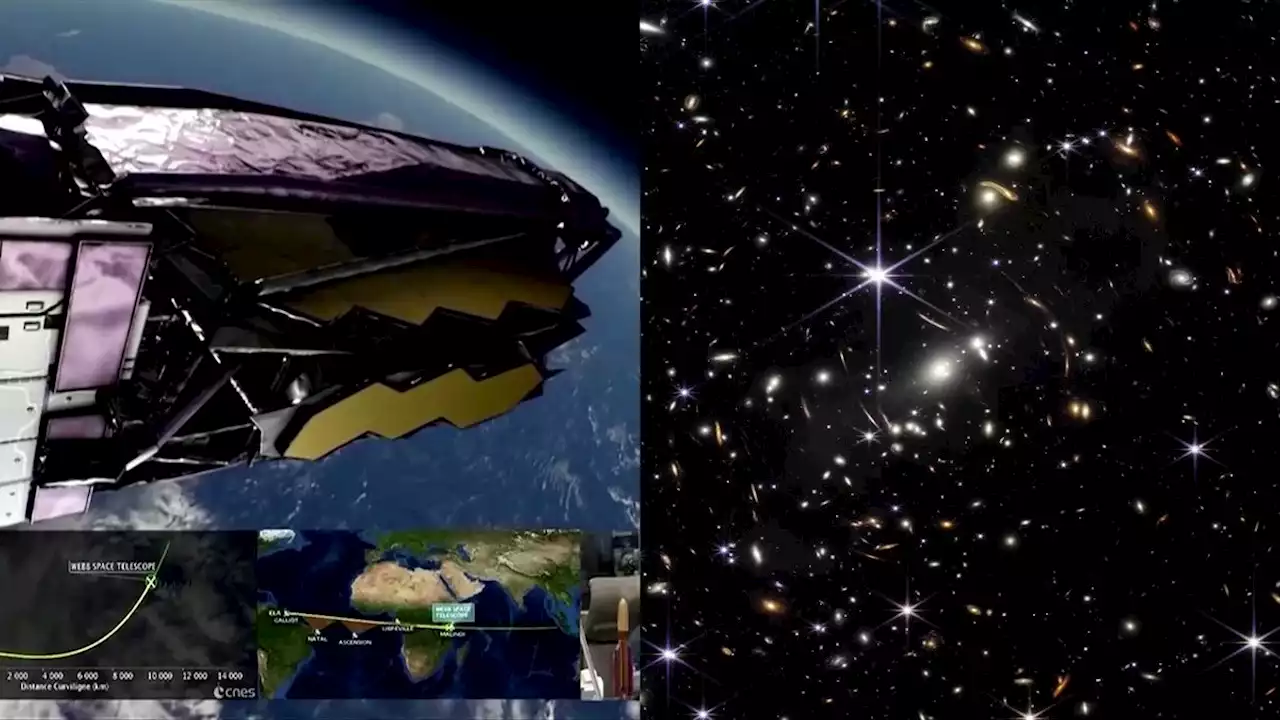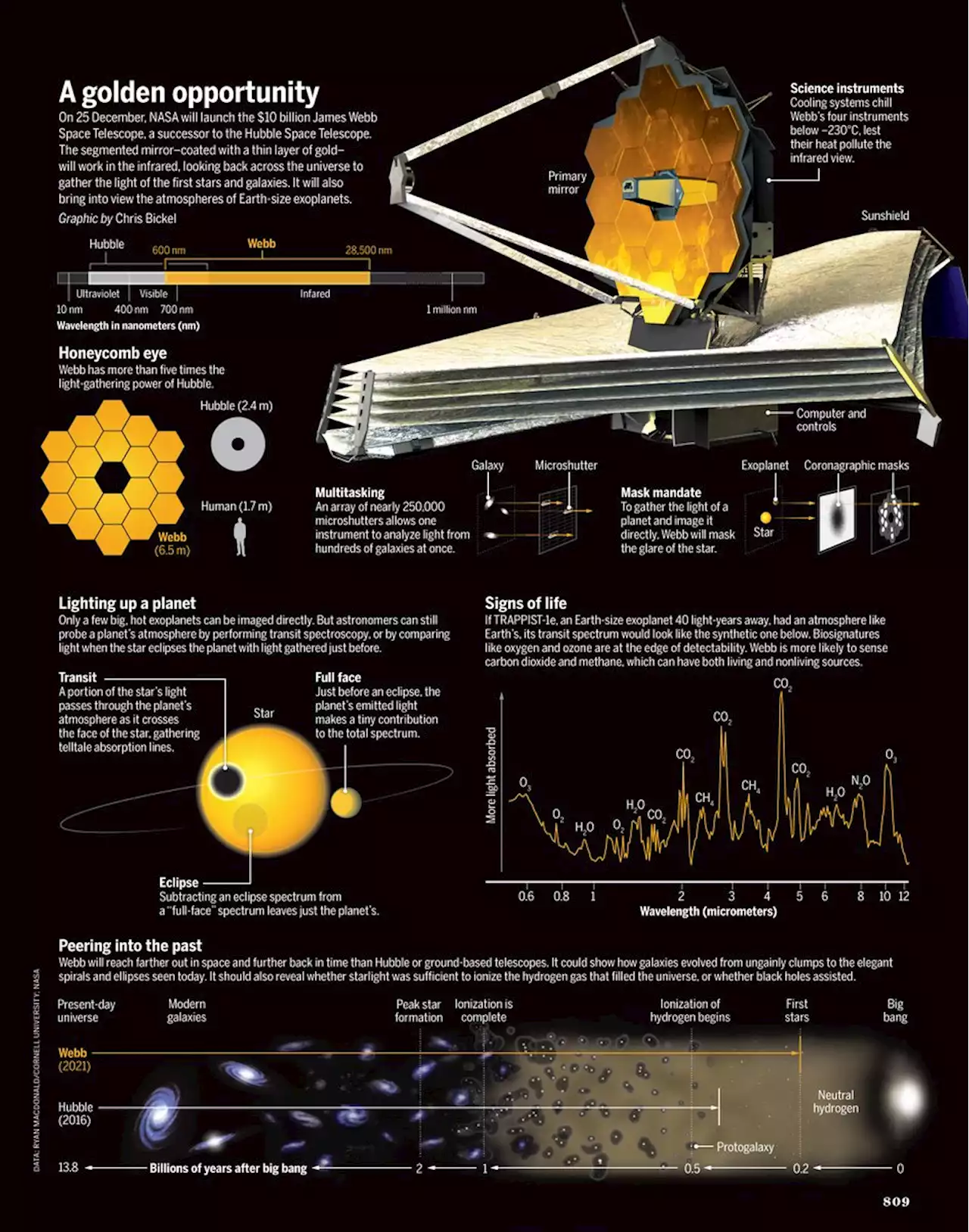The James Webb Space Telescope has released its first set of snapshots from the universe above. Learn more about the iconic JWST: ScienceVisuals
when prime contractor Northrop Grumman discovered faulty welds, incorrect lubricants, missing bolts, and tears in the telescope’s giant sunshield.
Ground-based telescopes at the time could barely see halfway back across the 13.8-billion-year history of the universe. Hubble, with no atmosphere to blur its view, could take astronomers much closer to the beginning. In its first “deep-field” exposure, in 1995, it stared at a seemingly empty patch of sky in Ursa Major for 140 hours. Almost every one of the 3000 objects that popped into view was a distant galaxy, shining from times as early as 1.5 billion years after the big bang.
Mapping out how protogalaxies formed might also reveal something about the nature of dark matter, Rieke says. “Finding the first aggregations of stars may tell us more about what was leftover after the big bang,” she says.
If Webb does find the early universe swarming with black holes, astronomers will be forced to reckon with their speedy assembly. Did giant population III stars collapse into black holes, providing “seeds” that merged into supermassive ones? Or did black holes form directly from collapsing clouds of gas after the big bang? “It’s hotly debated,” Maiolino says.University of California, Santa Cruz
At shorter infrared wavelengths, Webb will see newborn planets, which glow in the infrared. It will be able to dissect the chemical makeup of the planet-forming material and how it varies across the disk. “It’s important to know the environment in which the planet is formed,” says Isabelle Baraffe, a theorist at Exeter. “It helps to constrain the models.”
Transiting planets also periodically pass behind their star; Webb will compare the star’s light just before and during these eclipses. Prior to the eclipse, the light includes both the star’s emissions and the much fainter light from the planet, whereas the eclipse itself blots out the planet’s light. By comparing the two signals, astronomers can infer the planet’s own glow, which betrays information about temperatures and cloud cover.
Österreich Neuesten Nachrichten, Österreich Schlagzeilen
Similar News:Sie können auch ähnliche Nachrichten wie diese lesen, die wir aus anderen Nachrichtenquellen gesammelt haben.
 Here are the James Webb Space Telescope’s stunning first picturesThe NASA telescope images show a stellar birthplace, the gassy environs of a dying star, a galaxy smashup and the deepest view into the cosmos yet.
Here are the James Webb Space Telescope’s stunning first picturesThe NASA telescope images show a stellar birthplace, the gassy environs of a dying star, a galaxy smashup and the deepest view into the cosmos yet.
Weiterlesen »
 James Webb Space Telescope releases dazzling first science imagesStrikingly clear images of the Carina Nebula, the Eight-Burst Nebula, a galaxy cluster called Stephan’s Quintet and an exoplanet named WASP-96b make up the first set of science data from NASA's James Webb Space Telescope
James Webb Space Telescope releases dazzling first science imagesStrikingly clear images of the Carina Nebula, the Eight-Burst Nebula, a galaxy cluster called Stephan’s Quintet and an exoplanet named WASP-96b make up the first set of science data from NASA's James Webb Space Telescope
Weiterlesen »
Webb telescope wows with first imagesAt long last, eager astronomers—and the public—get to view snapshots of the universe provided by the JWST, the largest, most complex, and most expensive space telescope ever built.
Weiterlesen »
 NASA Delivers First Batch of Images From James Webb Space TelescopeThe most sophisticated and ambitious space telescope ever built has finally started its science mission.
NASA Delivers First Batch of Images From James Webb Space TelescopeThe most sophisticated and ambitious space telescope ever built has finally started its science mission.
Weiterlesen »
 James Webb Space Telescope's First Color Images RevealedWatch: NASA released the first set of full-color images from the James Webb Space Telescope. We explain how they were captured and what they could tell us about the formation of the universe.
James Webb Space Telescope's First Color Images RevealedWatch: NASA released the first set of full-color images from the James Webb Space Telescope. We explain how they were captured and what they could tell us about the formation of the universe.
Weiterlesen »
 NASA draws back curtain on Webb space telescope's first full-color imagesNASA on Tuesday drew back the curtain on billions of years of cosmic evolution with the inaugural batch of photos from the largest, most powerful observatory ever launched to space, saying the luminous imagery showed the telescope exceeds expectations.
NASA draws back curtain on Webb space telescope's first full-color imagesNASA on Tuesday drew back the curtain on billions of years of cosmic evolution with the inaugural batch of photos from the largest, most powerful observatory ever launched to space, saying the luminous imagery showed the telescope exceeds expectations.
Weiterlesen »
